Sony DSC-F828 Cyber-shot: Long Lens, High Quality

Just a year ago, if you were looking for a digital camera with resolution higher than 6 megapixels, your only options were the $8,000 Canon 1DS and the $4,000 Kodak DCS 14n. As of today, though, you can choose from among four different 8-megapixel cameras, each priced around $1,000. Sony’s entry into this new higher-resolution market is the DSC-F828 Cyber-shot, an obvious descendent from its previous DSC-F505v model, but with a re-designed body and new feature set.
Sony’s latest is a very nice camera with excellent build quality and feel, and its images are very impressive, further reinforcing Sony’s prowess in the digital camera market. Nevertheless, the F828 is an excellent demonstration of how, in most digital camera companies these days, the marketing department is leading the horse, yelling “more pixels, we must have more pixels!” The fact that the F828 is not as good a value as some lower-resolution cameras, makes this model a great study in some of the finer points of digital camera design.
Split Decision
Sony’s first iteration of the F828’s design was the F505v, which sported a very large lens, with a rotating LCD/control package attached to the right side. The F828 follows this design, but with a magnesium body, updated design and controls, and a much cooler-looking black finish.
The bulk of the camera’s weight is in the lens, so you will usually hold the camera by cradling the lens in your left hand. With your right hand, you can tilt the viewfinder. Because the shutter button and zoom controls are located directly above the LCD screen, as you rotate the viewfinder assembly, all of the necessary controls rotate along with it, so your right hand remains in a good shooting position. Though it’s possible to hold with only your right hand, the camera’s weight will probably bias you to holding it in your left.
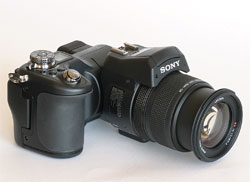
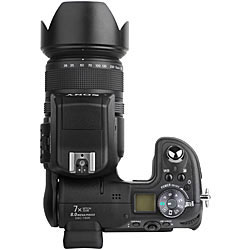
Figure 1: Most of the F828’s weight stems from the lens — as emphasized in the top view — so two-handed shooting is a necessity.
For a split-body design, Sony’s approach is much more comfortable than Nikon’s old split Coolpix design. The big round lens barrel of the Sony model sits comfortably in the hand and is well balanced, to provide a good feel.
Like cameras with swiveling LCD screens, split-body cameras provide tremendous shooting flexibility. You can hold them over your head and tilt the screen down, hold them at waist level and tilt the screen up, or hold them at eye level but adjust the screen to reduce glare and reflection so that it’s easier to frame your shoot. For this design to be effective, though, the camera has to have a good LCD screen. Fortunately, the F828’s LCD is bright and clear, and easy to see even in direct sunlight.
 Figure 2: The DSC-F828’s LCD screen provides a clear window onto your shots.
Figure 2: The DSC-F828’s LCD screen provides a clear window onto your shots.The camera’s only handling awkwardness comes when you want to shoot in portrait orientation. Because the lens only tilts up and down, when you rotate the camera to vertical, you won’t necessarily be able to tilt the screen toward your face if you position the camera above or below head level. This is where cameras with a screen that can tilt on two axes (like the Canon PowerShot G5) have the flexibility edge.
The camera also includes an electronic eyepiece viewfinder for times when you’d rather use the camera in a more traditional manner, holding it up to your eye to frame your shot. Electronic viewfinders are never as good as even a mid-range optical viewfinder, and though the F828’s is very good, it’s still like looking through a camcorder viewfinder. The refresh rate and visible scan lines are distracting.
To switch between the LCD screen to the electronic viewfinder you must move a slider switch on the back of the camera. This is an annoying inconvenience. Given that Minolta long ago implemented an automatic switch that responds to pressure against the optical viewfinder housing, it’s surprising that Sony has left this a manual operation.
Ultimately, no matter how many reviews you read, you need to handle this camera and shoot some pictures with it, before you’ll know if its design is right for you.
That’s Quite a Lens You’ve Got There!
The lens is the predominant feature on the DSC-F828, and it’s a very nice one. Offering a 28-200mm range (35mm equivalent), the fast f2 to 2.8 lens bears the Carl Zeiss stamp of approval. While the F828’s ancestors used an electronic zoom control, the new camera boasts a true manual zoom ring that provides smooth, accurate zooming, making for a very comfortable framing experience. Sony has made exactly the right choice in marking the lens with 35mm equivalents on its zoom ring.
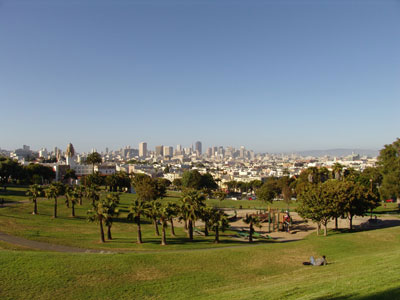

Figure 3: The F828’s 28 to 200mm zoom lens provides a tremendous range of focal lengths (7x) while maintaining an impressively fast wide aperture, f2 to f2.8. Simply put: The F828’s lens is top-notch. Neither extreme presents noticeable distortion and the wide angle is free of vignetting. Because it uses a real zoom ring instead of an electronic zoom control, zooming is fast and accurate.
Though there’s a little bit of measurable distortion at the extreme ends of the lens’s zoom range, in most everyday shots you won’t notice it. When shooting very bright subjects, a little bit of vignetting is visible but this, too, is hardly noticeable in typical shots. Usually, lenses with a zoom range this extreme suffer in sharpness, but the F828’s lens is very sharp through its entire range. Sharpness drops off a little when shooting at full wide, but you’d be hard-pressed to notice it, and it’s easily correctable in your image editor.
Fiddling with Features
Sony has done a good job of ensuring that the controls you need quick access to — white balance, exposure compensation, ISO — are located on the camera’s body. However, using these controls is a little clunky. Each of these features is implemented as a button that you press and hold down, while rotating a knob located on the back of the camera using your thumb. These “push-this, turn-that” features are always a little awkward because they require two hands, one to hold the camera and another to execute the control, but Sony’s interface makes things even more confusing. As you spin the dial, a virtual dial appears on screen and, with some fancy animation, starts zooming and rotating around. Why they opted for this overblown animation instead of a simple slider control is a mystery, as the feedback from the menu is not intuitive. This cutesy feature is the one thing that makes the camera feel like a consumer device rather than a higher-end tool.
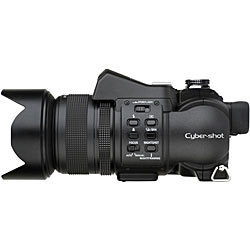 Figure 4: Most of the F828’s external controls are operated by pushing a button and spinning a dial located just below the shutter button. While this mechanism is easier with these buttons mounted on the left-side, it’s a good deal harder with the buttons mounted on top, next to the dial you’re supposed to be spinning.
Figure 4: Most of the F828’s external controls are operated by pushing a button and spinning a dial located just below the shutter button. While this mechanism is easier with these buttons mounted on the left-side, it’s a good deal harder with the buttons mounted on top, next to the dial you’re supposed to be spinning.Also frustrating is the camera’s lack of shooting priority. A mode dial on the top of the camera lets you switch between Program mode, priority modes, manual mode, scene mode (which provides preset exposure parameters for particular types of scenes such as sports or snow), Set Up, Movie mode, and Playback. Because the camera has a separate playback mode, the only way to return to shooting is to spin the Mode dial back to shooting mode. By this stage of the game, we would expect a $1,000 camera to have a single mode for shooting and playback so as to always be readily available for shooting.
Making the camera even less ready to shoot is the fact that the F828’s automatic review, which displays a picture for a few seconds after shooting, cannot be interrupted. So, if you’ve set auto review for 5 seconds, you have to wait 5 seconds between each shot. This effectively compromises both the auto-review feature, and the camera’s ability to shoot on demand.
Although the grip and heft of the camera are very comfortable, our particular unit had a hair-trigger shutter button, making it far too easy to accidentally shoot a picture, resulting in lots of images of blurry feet and blank walls.
Sony’s excellent Live Histogram feature is included on the F828. Where most cameras can only display a histogram of an image that you’ve already shot, the F828 can display a constantly updating, real-time histogram, as you shoot. This is a very cool exposure tool that you quickly become accustomed to having.
Unfortunately, if you’re also accustomed to having a usable manual focus feature, then you’re out of luck with this camera. Though the F828 provides a focus ring on its lens (it’s not mechanical, but rather a “focus-by-wire” mechanism), the fact that the camera only has LCD viewfinders makes manual focus a dubious proposition.
As one would expect, the F828 uses Sony’s MemoryStick but, very surprisingly, the camera also has a Type II CompactFlash slot, making it compatible with the more-popular media format. A simple slider switch lets you select between MemoryStick and CompactFlash, and you can actually have both installed at the same time.
The camera provides a decent burst mode that can mange 2.4 frames per second for up to seven frames. Unfortunately, the camera’s RAM buffer is very small so the camera must write out an entire burst — even if you only shot three frames — before you can start shooting again.
Overall, though, camera performance is very snappy with little shutter lag and good recycle times.
Impressive Images
So what do all of those extra pixels get you? For starters: an image that’s 3264 x 2448 pixels. On the downside, you’re going to see a fair amount of noise amongst those pixels, but it’s a very film-like grainy noise that probably won’t be terribly visible in print. The camera also suffers from some chromatic aberrations, but these problems are not a deal-breaker.
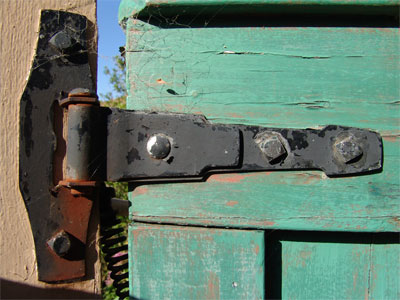 Figure 5: Thanks to its excellent lens, the F828 delivers very good image quality with strong sharpness and color fidelity. Click here to see a full-resolution version of this image.
Figure 5: Thanks to its excellent lens, the F828 delivers very good image quality with strong sharpness and color fidelity. Click here to see a full-resolution version of this image.Overall, the image quality is very good. The F828’s lens is top-notch across its entire zoom range and even at its widest aperture. Where most cameras derive color from red, green, and blue filters on the pixels of their image sensor, Sony has employed a new red, green, blue, and emerald filter for the F828. Some users have reported that images seem to have a bluish cast, but we did not find any conspicuous coolness in the images. The camera’s white balance and metering handled even difficult lighting situations with ease.
Sony has included a Raw mode on the F828, which lets the camera write out raw image data, allowing you to do high-bit editing, as well as easily adjust white balance and other camera settings after downloading the image to your computer. Like other high-end cameras, the F828 can save both a raw and jpeg file of each image, providing you with tremendous workflow flexibility. Unfortunately, because the camera’s buffer is so small, you’ll typically have to wait 10-15 seconds between each raw shot while the camera writes out its image. Simply put, this is unacceptable.
 Figure 6: The F828 is noisier than some lower-res cameras, including Sony’s own previous F707. In general, this noise will probably not be visible in your printed images.
Figure 6: The F828 is noisier than some lower-res cameras, including Sony’s own previous F707. In general, this noise will probably not be visible in your printed images.Concluding Thoughts
The DSC-F828 is a very impressive camera. Its exceptional lens and excellent image quality make it suitable for even picky photographers. And, for users who want to be able to print out large prints, or blow up small crops, the 8 megapixels worth of image data provides tremendous possibilities. It’s just too bad that Sony couldn’t have done a better job on some basic usability issues.
The problem for Sony is that, for the same price as the F828, you can buy a Canon EOS Digital Rebel, with Canon’s excellent 18-55 lens. Yes, this is a smaller zoom range and slower lens than what the Sony offers, but that deficiency is more than made up for by the fact that the Rebel provides you with, among other things: a true SLR optical viewfinder which facilitates accurate manual focus; lower noise at ISOs above 100; interchangeable lenses; better burst performance in raw and JPEG mode, and shooting priority.
If you absolutely cannot spend more than $1,000 and you need a long, fast lens, then the Sony is probably a better way to go. Or, if you want a smaller camera than the Digital Rebel then the F828 will be a great solution. Finally, if you absolutely need a QuickTime movie mode, or an LCD screen that can be used as a viewfinder, then the Rebel is definitely not an option. If any of these sound like you, then the Sony will be a good choice that will yield very good images.
This article was last modified on December 14, 2022
This article was first published on May 25, 2004




